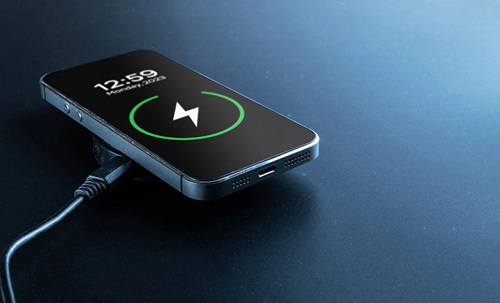In today’s digital world, smartphones, tablets, and laptops have become essential companions. With increasing screen time and power-hungry apps, charging speed is one of the top concerns for users. Fast chargers solve this problem by charging devices much quicker than conventional ones. However, the market is flooded with chargers, and not all are genuine fast chargers. Knowing how to identify a fast charger helps you save time, protect your device, and avoid wasting money on low-quality products.

What is a Fast Charger?
A fast charger delivers higher wattage (power) than a standard charger, enabling your device to recharge faster. Standard chargers usually provide 5W (5V/1A) output, while fast chargers can range from 18W to 120W or more depending on the brand and technology (like Qualcomm Quick Charge, USB Power Delivery, VOOC, or SuperVOOC).
Key Ways to Identify a Fast Charger
1. Check the Charger’s Output Rating
- Every charger has specifications printed on it (often in small text).
- Look for the Output section, usually written as Volts (V) x Amps (A).
- For example:
- 5V/1A = 5W (normal speed)
- 9V/2A = 18W (fast charging)
- 11V/6A = 66W (superfast charging)
- Anything above 10W can generally be considered fast charging.
2. Look for Fast-Charging Logos or Certifications
Many brands use specific logos to indicate fast charging, such as:
- Qualcomm Quick Charge (QC 2.0, 3.0, 4.0, or 5.0)
- USB Power Delivery (PD)
- SuperVOOC / VOOC (Oppo, Realme, OnePlus)
- TurboPower (Motorola)
- Adaptive Fast Charging (Samsung)
These symbols usually appear on the charger brick or packaging.
3. Check Your Phone’s Compatibility
Even if you buy a fast charger, your device must support fast charging.
- For example, some phones support 18W fast charging, while others support 65W or 100W.
- Check your phone’s manual or manufacturer website to confirm the supported charging standard.
4. Observe Charging Speed in Real Use
- Plug your device and check how fast the percentage increases.
- Many phones display “Fast Charging,” “Dash Charging,” or “Super Charging” on the lock screen when a compatible fast charger is connected.
- If the speed is slow or similar to a normal charger, it might not be a genuine fast charger.
5. Use Original or Certified Chargers
- The safest way to identify and ensure fast charging is by using the original charger provided by the manufacturer.
- If buying separately, look for certified brands or IS/CE/UL safety marks.
6. Check the Cable Quality
- A fast charger requires a fast-charging compatible cable.
- For example:
- Normal USB cables may only support 2A current.
- Fast charging cables support 3A, 5A, or even 6.5A.
- Look for “USB PD cable” or “Quick Charge cable” labels when purchasing.
Common Mistakes to Avoid
- Buying cheap duplicates: Many low-cost chargers claim to be fast chargers but don’t deliver proper output.
- Ignoring device limits: Even if your charger supports 65W, your phone may only take 18W.
- Using old or low-quality cables: A poor cable reduces charging speed significantly.
- Not checking safety: Some fake fast chargers overheat and may damage your battery.
Safety Tips for Using Fast Chargers
- Always prefer original or authorized brand chargers.
- Avoid overnight charging with unreliable chargers.
- Check for overheating issues—if your charger gets excessively hot, it may be unsafe.
- Replace damaged cables immediately.
Final Thoughts
Identifying a fast charger is easy if you know what to look for—check the output wattage, certifications, and compatibility with your device. Fast chargers save time and improve convenience, but buying the right one is equally important for safety and performance. Always stick to trusted brands, use the correct cable, and verify your phone’s supported charging standard. By doing so, you can enjoy true fast charging without harming your device.